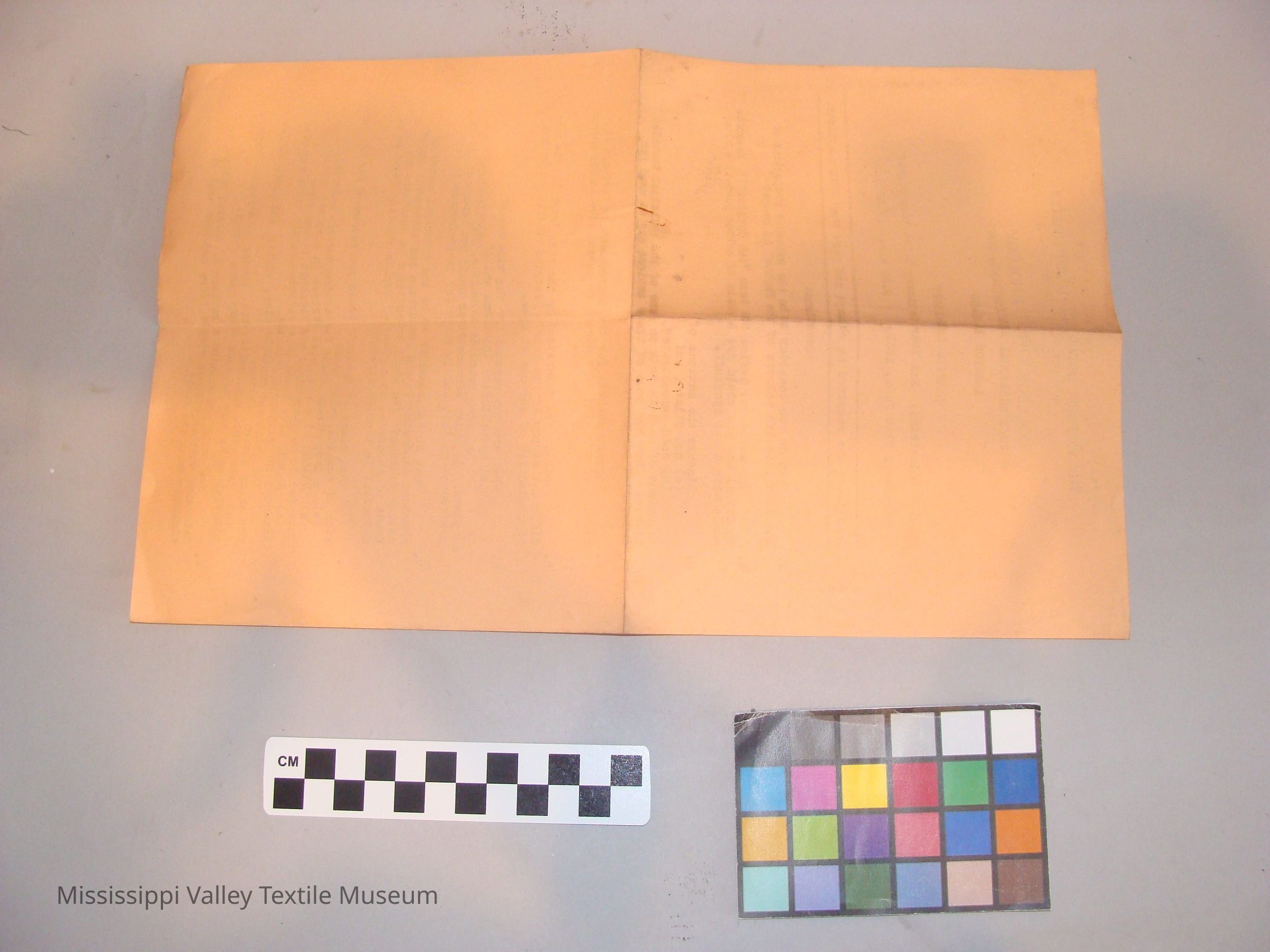Name/Title
Exercise, SchoolEntry/Object ID
1991.05.03.07Scope and Content
Peach coloured, legal sized paper.
The Victoria University of Manchester
College of Technology
June Sessional Examinations 1939 Session 1938-39
Textile Chemistry
9 Questions
Some handwritten letters and checkmarks
Revers; Blank Page
Transcription :
IO.OOC P.B.S.
THE VICTORIA UNIVERSITY OF MANCHESTER
(FACULTY OF TECHNOLOGY)
COLLEGE OF TECHNOLOGY
JUNE SESSIONAL EXAMINATIONS, 1939
SESSION 1938-39
TEXTILE CHEMISTRY
Textile Industries. 2nd Year Ordinary & 1st Year Higher Wednesday, 21st June, 1959. 9.30 a.m.~ 12.30 p.m.
Candidates are required to attempt not more than FIVE questions.
Questions :
1. What do you consider to be the valuable properties of
the insoluble Azo colours of the Naphtol AS range?
2,. How would you define the term "vat dyestuff"? Describe
in detail how you would dye a skein of cotton yarn to a blue shade with a vat dyestuff.
3. Discuss the actions of
(a) hot dilute, and
(b) cold concentrated, solutions of caustic soda on some of the principal textile fibres. Show how some of these actions may be used for Indus trial purposes.
v 4. Suggest methods for the improvement in fastness to
washing of a dyeing of a direct or substantive cotton colour on viscose rayon material.
v 5. What do you understand by the term "rayon"? How many
different rayons do you know? Describe briefly the method of production of any one of them.
6. What are the reasons for the wide use of
(a) hypochlorite solutions and of
(b) hydrogen peroxide solutions, for bleaching purposes? In which circumstances would you recommend (a) in preference to (b) , and in which (b) in preference to (a)?
7. What do you consider to be the principal causes of
chemical tendering in the production and subsequent use of cotton fabrics? How would you attempt to determine the cause of tendering in a bleached poplin shirting found to be deficient in tensile strength?
8. What class of dyestuff would you recommend for use in
each of the following cases:- c
(a) a deep maroon shade for cotton curtain material. 6
(b) Black, blue and green stripes in a cotton poplin v intended to be mercerised and bleached in the piece.
(c) A navy blue shade on a viscose-acetate crepe material intended for discharge printing.
(d) The brightest possible blue, violet, and green shades^ for cheap cotton banting.
(e) Pale pink, sky, helio, etc. shades on a viscose rayon material to be made up into cheap dance frocks.
V 9. How would you examine a pattern of worsted suiting to
determine whether viscose staple fibre had been used in admixture with the wool?Collection
Textile IndustryCataloged By
Murray, PamLexicon
Nomenclature 4.0
Nomenclature Primary Object Term
Exercise, SchoolNomenclature Sub-Class
Instructional DocumentsNomenclature Class
Documentary ObjectsNomenclature Category
Category 08: Communication ObjectsLOC Thesaurus for Graphic Materials
Education, Textile industry, Tests, Examinations, ChemistrySearch Terms
Manchester UniversityLocation
Location
Drawer
D65Room
Collections RoomBuilding
M.V.T.M.Category
PermanentDate
November 7, 2023Location
Container
Archive Box 1Shelf
Shelf 2, Shelf 2Cabinet
Red SideboardRoom
Collections RoomBuilding
M.V.T.M.Category
PermanentMoved By
Whit, ElizabethDate
July 7, 2016Relationships
Related Person or Organization
Person or Organization
Bornet, George M.General Notes
Note
Status: OK
Status By: Cotter, Ellen
Status Date: 2022-06-07Created By
admin@catalogit.appCreate Date
June 25, 2010Updated By
admin@catalogit.appUpdate Date
November 11, 2023
